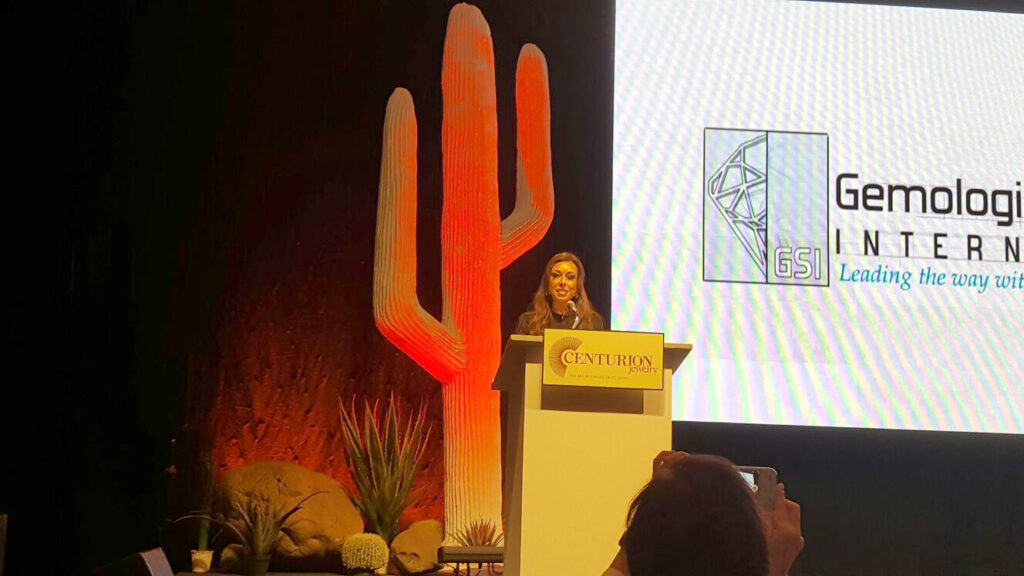Famous Diamonds: The Regent Diamond

While the name of the Regent Diamond hints at a royal past, the origins of this precious gem are anything but. This diamond has a history of more than 300 years, journeying through continents and passing through the hands of paupers and nobility alike. Like many famous diamonds, the Regent has witnessed betrayals, rivalries, spilled blood, and sheer bad luck, bearing it all with timeless elegance. It now rests prettily and peacefully in Paris, free to be admired and learned from. But before you take that trip to France to see the gem for yourself, let’s take a closer look at its interesting history over time.

Origin of the Regent Diamond
Like most diamonds of the ancient world, the rough stone of the Regent Diamond comes from the alluvial mines of India. However, there is some debate as to who exactly found the stone. The most famous and exciting version of the diamond’s history involves a slave.
In 1698, the slave is said to have discovered the stone in the Kollur Mines of the Kistna (modern-day Krishna) River. He immediately concluded that the rough stone could be very valuable. Thus, he inflicted a wound on his leg and placed the stone between the bandages designed to conceal this wound.

The slave then traveled away from the mines towards the sea, where he used the stone as a bargaining chip with an English sea captain to secure passage to a country where he would be free. However, the English captain got greedy. He realized he would not have to split the money from selling the stone if he did away with the slave, who he then murdered and stole from. He sold the rough stone for £1,000 to an Indian merchant called Jamchand, allegedly squandered the money, and then hanged himself.
Making the Regent Diamond
In 1701, Jamchand sold the stone to Governor Thomas Pitt of Madras for £20,000. In 1702, Pitt hid the stone in his son’s shoe and sent it over to London. After two years, Pitt wanted the stone to be cut and handed it over to a London cutter called Harris. It took Harris two years to cut the 410-carat stone, which yielded several small stones, and the larger, 140-carat Pitt Diamond which would later be known as The Regent.
Journey of the Regent Diamond
Thomas Pitt sold the smaller stones to Russia’s Peter the Great. However, he had a harder time finding a buyer for the hefty Pitt Diamond. After failing to sell it to France’s Louis XIV, Pitt finally found a buyer in the Duke of Orléans, Philippe II, when he was appointed Regent for Louis XV. He bought the diamond in 1717 for £135,000 and it was named ‘Le Regent,’ after his title.

When Louis XV was ready to ascend to the throne in 1723, the Regent Diamond was set in his crown. The diamond was also set onto Louis XVI’s crown in 1775.
One of Marie Antoinette’s hats hosted the diamond until the advent of the French Revolution when it was stolen.
Years later, the Regent Diamond was found hidden in an attic in Paris. After its recovery, Parisian jewelers set it on Napoleon Bonaparte’s sword belt, and later, in the hilt of his sword.

Napoleon’s second wife, Marie Louise, inherited the diamond after his death and took it with her to Austria. After her father returned it to France, it was set upon the crowns of Louis XVIII, Charles X, and Napoleon III. Empress Eugenie also wore it on her diadem.
The Regent Diamond Today
Harris made the rough stone discovered by a slave into a 141-carat cushion-shaped, brilliant-cut diamond. It is the 7th largest D-color diamond, graded Internally Flawless with a bluish glow. Its current worth is estimated at around £48 million, which translates to over $65 million in 2022. The diamond has been on display at the Louvre’s Apollon Gallery in Paris since 1887.

Diamonds carry a lot of history. Read more stories about the most famous diamonds of all time.
Famous Diamonds: The Koh-I-Noor
Famous Diamonds: The Tiffany Yellow Diamond
Famous Diamonds: The Golden Jubilee
Famous Diamonds: Cullinan I & II
Famous Diamonds: The Incomparable Diamond

About The Author
Debbie Azar is the Co-Founder and President of Gemological Science International (GSI), one of the largest gemological organizations in the world, and a distinguished leader in the global diamond and jewelry industry. As an executive with extensive knowledge of the jewelry and gem lab industries, her entrepreneurial skills and vision have helped GSI achieve rapid and continuous growth worldwide, establishing 13 leading-edge gemological facilities on four continents. She currently serves on the boards of the Jewelers Vigilance Committee, Responsible Jewellery Council, and Jewelers for Children, and is a member of the 24 Karat Club of New York. She has been featured in Forbes, Daily Mail, Good Morning America, Bloomberg, Bloomberg Businessweek, Fox Business, Fox5, CBS2, BOLDTV, Varney&Co, The Street, and NASDAQ, among others.

















































